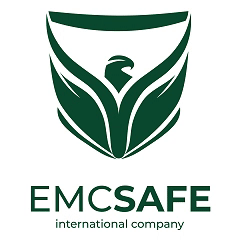DRILLING BENTONITE
- API sodium montmorillonite for drilling
- OCMA grade bentonite high yield.
- High cation exchange capacity ensures.
- Environmentally acceptable water-based drilling additive
- Reliable rheology control and suspension.
Download :

The most common use of bentonite is in drilling fluids. The bentonite in the flush fluid lubricates and cools the cutting tools while protecting against corrosion. As the drilling fluid generates hydrostatic pressure in the borehole, it hinders fluid and gas penetration. The drilling liquid conveys the drill cuttings to the surface. When the purge pumps have idle periods, the thixotropy of the bentonite hinders the stone material from dropping back into the drilled shaft.
As a flushing fluid, bentonite seals the drilled shaft from water ingress downwards and at the sides of the shaft. The mineral forms a firm sludge cake on the bore wall, which provides the borehole with additional stability. The fine bentonite particles enter into the bore wall where they swell and harden. Depending on the constitution of the ground structure, fine and coarse particles are needed.
What standards and tests apply to drilling bentonite?
Key standards, grades, and test methods used to specify and accept drilling-grade bentonite are:
API SPEC 13A / ISO 13500 (Drilling-fluid materials): API Spec 13A (and the identical ISO 13500 series where adopted) defines product categories, sampling, and standardized laboratory test methods for materials used in drilling fluids (including bentonite and OCMA-grade bentonite). Compliance with relevant API/ISO clauses is the primary industry benchmark for drilling bentonites.
- OCMA / “OCMA-grade” designation: OCMA historically denotes an oil-industry grade (Oil Companies Materials Association) of drilling bentonite; in practice, many suppliers still reference “OCMA-grade” or “API/OCMA” descriptions while relying on API/ISO test methods for acceptance criteria.
Common laboratory tests and acceptance metrics (typically performed to API/ISO procedures) include:
Swelling index / Free swell (mL/2 g) — a measure of expansion capacity and a fundamental indicator of sodium-bentonite performance.
API filtration (API static filtrate, mL) — standard fluid-loss test; many drilling bentonite products are characterized by low API filtrate values when properly hydrated and dispersed (reference calibration materials report dispersed filtrate ≈ 10–12 mL for API test standards).
Rheological parameters and gel strengths (viscometer readings, yield point, plastic viscosity, gel) — used to size and control mud behaviour under static and dynamic conditions.
Chemical and solids analyses (salinity, cation content, particle size, methylene-blue or bentonite-equivalent tests) — important to predict flocculation, thermal stability, and compatibility with other mud additives.

OCMA | |
|---|---|
Yield Point/Plastic Viscosity Ratio | Max 6% |
Viscometer Dial reading at 600r/min | Min 30 |
Filtrate Volume | Max 16 Cm3 |
Physical State | Free Flowing Powder |
Residue Greater than 75 Microns | Max 2.5 % |
Moisture | Max 13% |
API 13A | |
|---|---|
Yield Point/Plastic Viscosity Ratio | Max 3% |
Viscometer Dial reading at 600r/min | Min 30 |
Filtrate Volume | Max 15 Cm3 |
Physical State | Free Flowing Powder |
Residue Greater than 75 Microns | Max 4.0 % |
Moisture | Max 10% |

What is Drilling Bentonite?
Bentonite is a clay mineral formed from the volcanic ash of ancient eruptions. For drilling applications, sodium bentonite (Na-Bentonite) is essential due to its unique capacity to hydrate, absorb water (up to 10x its weight), and swell volumetrically, creating a viscous, gel-like fluid that is the lifeblood of the drilling process.
Key Functions of Bentonite in Drilling Mud
Bentonite is a multi-functional additive that performs several critical roles simultaneously:
Viscosifier: dramatically increases the fluid’s viscosity, enabling it to carry rock cuttings (cuttings) to the surface.
Filter Cake Formation: seals the borehole wall with a thin, impermeable layer, preventing fluid loss into the formation and protecting groundwater aquifers.
Wellbore Stabilization: supports the borehole walls, preventing collapse and ensuring a stable path for the drill string.
Lubrication & Cooling: reduces friction and heat on the drill bit and string, minimizing wear and preventing downhole tool failure.
Cuttings Suspension: its thixotropic property (gels when static) keeps cuttings suspended when circulation stops, preventing them from settling and causing a stuck pipe.
Understanding Bentonite Standards: OCMA vs. API 13A
A critical aspect of selecting the right bentonite is understanding industry standards. The two most referenced specifications are OCMA and API.
What is OCMA Bentonite?
OCMA (Oil Companies Materials Association) was an older standard that was widely used before the API standard became the global benchmark.
It defined quality parameters for bentonite used in drilling fluids, but its testing requirements were generally less rigorous than the current API standards.
While now considered largely obsolete and replaced by API, the term “OCMA grade bentonite” is still sometimes used in certain regions and tender documents to refer to a basic grade of drilling bentonite.
What is API 13A Bentonite?
API 13A / ISO 13500 is the current, globally recognized standard set by the American Petroleum Institute. It represents the highest benchmark for quality and performance.
Its testing protocols are more stringent, specifically requiring better performance in:
Rheological Properties: Higher minimum viscosity and gel strength values.
Filtration Control: A stricter maximum fluid loss limit (15.0 ml API filter press test).
Using API-certified bentonite is non-negotiable for critical, deep, or complex drilling operations as it guarantees consistency, reliability, and minimizes the risk of wellbore problems.
Key Takeaway: While OCMA refers to an outdated standard, API 13A is the modern specification you must insist on for assured performance and project safety. Material meeting API standards will far exceed old OCMA requirements.
Applications of Bentonite in Drilling Operations
Water Well Drilling: The primary application for stabilizing the borehole and sealing the annulus around the well casing.
Horizontal Directional Drilling (HDD): Essential for lubricating the borehole during pipeline and utility installation.
Geotechnical & Environmental Drilling: Used for soil sampling and installing monitoring wells.
Oil & Gas Drilling (Surface Hole): Used to drill the top section of the well and protect freshwater zones.
Blast Hole Drilling: Used in mining to stabilize drill holes before placing explosives.
Frequently Asked Questions (FAQ)
Q: What is the difference between OCMA and API bentonite?
A: API 13A bentonite must meet stricter performance requirements, especially for fluid loss control and viscosity, making it a higher-quality and more reliable product than what was defined by the older OCMA standard.
Q: Can I use bentonite in saltwater?
A: No. Standard sodium bentonite will not perform in saltwater. For these environments, special salt-resistant clays (e.g., attapulgite) or polymers are required.
Q: Is drilling bentonite environmentally safe?
A: Yes. It is a natural, non-toxic clay and is certified for use in potable water well drilling under standards like NSF/ANSI 60.
Q: What is the typical bentonite mixing ratio?
A: A common ratio is 20-25 pounds (9-11 kg) per 100 gallons (375 liters) of water, but this can vary based on soil conditions and desired viscosity.
Conclusion: Choosing the Right Bentonite
Selecting the correct drilling bentonite is fundamental to your project’s success. While historical references to OCMA may persist, the API 13A standard is the definitive mark of quality and performance. Insisting on API-certified bentonite is the best way to ensure wellbore stability, control costs, and complete your drilling project efficiently and safely.



